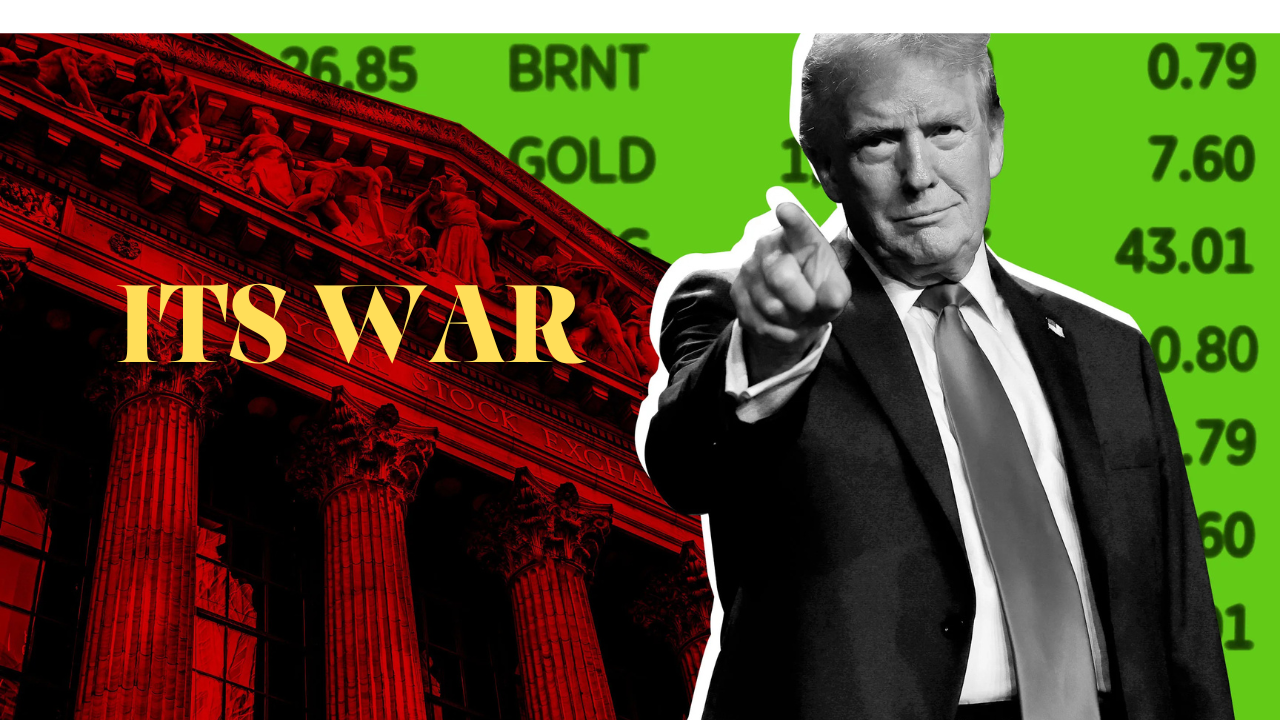A New Economic Battlefield: How Tariffs Are Reshaping the Global Economy
The immediate effect? Increased inflationary pressures, market volatility, and the rising strength of the U.S. dollar as investors seek safe-haven assets.
How the Strong U.S. Dollar Is Affecting Markets
One of the key market responses to this trade war has been a rising U.S. dollar against major global currencies, including the Chinese yuan, the euro, and the Canadian dollar. The U.S. Dollar Index (DXY), which measures the dollar’s value against a basket of foreign currencies, has climbed as investors move their capital into U.S. assets as a hedge against global uncertainty.
Why This Matters
- A stronger dollar makes U.S. exports more expensive for foreign buyers, potentially hurting American manufacturers who rely on international sales.
- A rising dollar makes imports cheaper, helping American consumers but squeezing domestic producers who compete with imported goods.
- Investors are buying U.S. bonds, increasing capital flows into the country, which could lead to lower long-term interest rates but tighter financial conditions abroad.
With this backdrop, investors must position their portfolios carefully to capitalize on the winners and avoid the losers.
Investment Playbook: How to Navigate the Tariff-Driven Market
1. Stocks to Buy: U.S. Companies That Benefit From Tariffs
Certain industries will thrive under new trade restrictions, particularly those that focus on domestic production, infrastructure, energy, and defense.
20 Stocks to Buy Now (Winners from Tariffs & a Strong Dollar)
Industrial & Manufacturing Stocks (Reshoring Boom)
- United Rentals (URI) – Higher material costs mean companies will rent equipment instead of buying it, boosting URI’s business.
- Nucor (NUE) – As the largest U.S. steel producer, NUE will benefit from tariffs on foreign steel.
- Cleveland-Cliffs (CLF) – CLF is a major domestic supplier of iron ore, which will see increased demand as steel manufacturing shifts back to the U.S.
- Caterpillar (CAT) – With infrastructure spending rising, demand for domestically made heavy machinery will increase.
- Deere & Co (DE) – Farmers will buy more American-made tractors and farming equipment as foreign imports become more expensive.
Retail & Consumer Staples (Inflation Protection)
- Dollar General (DG) – As inflation rises, consumers will shift spending to discount retailers like DG.
- Constellation Brands (STZ) – Alcohol producers can pass cost increases onto consumers, maintaining stable profit margins.
- Altria (MO) – Cigarettes are a highly inelastic product, meaning demand remains stable despite price increases.
Energy & Commodities (Inflation Hedges & Strong Dollar Plays)
- ExxonMobil (XOM) – Oil prices are expected to rise due to global trade disruptions, benefiting domestic producers.
- Chevron (CVX) – With U.S. energy independence becoming more critical, CVX stands to gain from higher domestic oil and gas production.
- Freeport-McMoRan (FCX) – A major U.S. copper producer, FCX benefits from infrastructure growth and inflation hedges.
- Newmont Corp (NEM) – Gold thrives during economic uncertainty, making gold miners like NEM strong investments.
Technology & Semiconductors (Supply Chain Shifts)
- Intel (INTC) – With tariffs increasing costs for Chinese-made chips, U.S. semiconductor production will become more profitable.
- Micron Technology (MU) – As a U.S.-based memory chip supplier, MU benefits from the reshoring of tech manufacturing.
- ON Semiconductor (ON) – With the electric vehicle and AI boom, demand for U.S.-made semiconductors is increasing.
- Texas Instruments (TXN) – Fewer Chinese chip imports mean companies like TXN can capture more domestic market share.
Defense & Security (Geopolitical Tensions & Rising Government Spending)
- Lockheed Martin (LMT) – A potential rise in defense spending will drive growth for major defense contractors.
- Northrop Grumman (NOC) – U.S. military expansion means more contracts for missile and aerospace technology.
- Palantir (PLTR) – Government cybersecurity and AI defense contracts will continue to rise.
- Boeing (BA) – With a stronger dollar, foreign airlines may increase orders for U.S.-made aircraft.
2. Stocks to Short: Companies Hurt by Tariffs & a Stronger Dollar
While some companies will thrive, others will struggle due to rising costs, supply chain disruptions, and weaker global demand.
20 Stocks to Short (Losers from Tariffs & a Strong Dollar)
Technology & Consumer Electronics (Higher Costs, Lower Demand)
- Apple (AAPL) – Relies heavily on Chinese manufacturing, leading to higher production costs.
- Tesla (TSLA) – China may impose retaliatory tariffs on U.S. car exports, hurting Tesla’s international business.
- HP Inc. (HPQ) – Laptops and printers rely on Asian supply chains, making production more expensive.
Retail & Consumer Goods (Rising Import Costs)
- Nike (NKE) – Manufactures most of its shoes in Asia, increasing costs.
- Target (TGT) – Imports a significant percentage of its products, making them more expensive.
- Walmart (WMT) – Forced to raise prices due to higher import costs.
- McDonald’s (MCD) – Food prices may rise due to higher agricultural tariffs.
Auto Industry (Higher Supply Costs & Weak Global Demand)
- General Motors (GM) – Increased tariffs on auto parts raise production costs.
- Ford (F) – The company’s global supply chain makes it vulnerable to rising tariffs.
Tech Hardware & Industrial Goods
- Cisco Systems (CSCO) – Imports a large portion of networking equipment from China.
- Boeing (BA) – China could cancel orders for Boeing planes as retaliation.
Final Thoughts: How Investors Should Position Themselves
Monitor the U.S. dollar’s strength, as it influences exports and capital flows.
Go long on U.S. manufacturers, energy companies, and inflation-resistant sectors.
Short consumer electronics, global retailers, and companies with China exposure.
Join Marathon Money Plus for Exclusive Trade Strategies
🔗 Join the free Discord or sign up for our memberships at MarathonMoneyPlus.com
📩 Want to join our free Discord community? Email me at [email protected].
The market is moving fast. Stay informed, stay ahead, and stay profitable.
Discover more from Marathon Money +
Subscribe to get the latest posts sent to your email.
